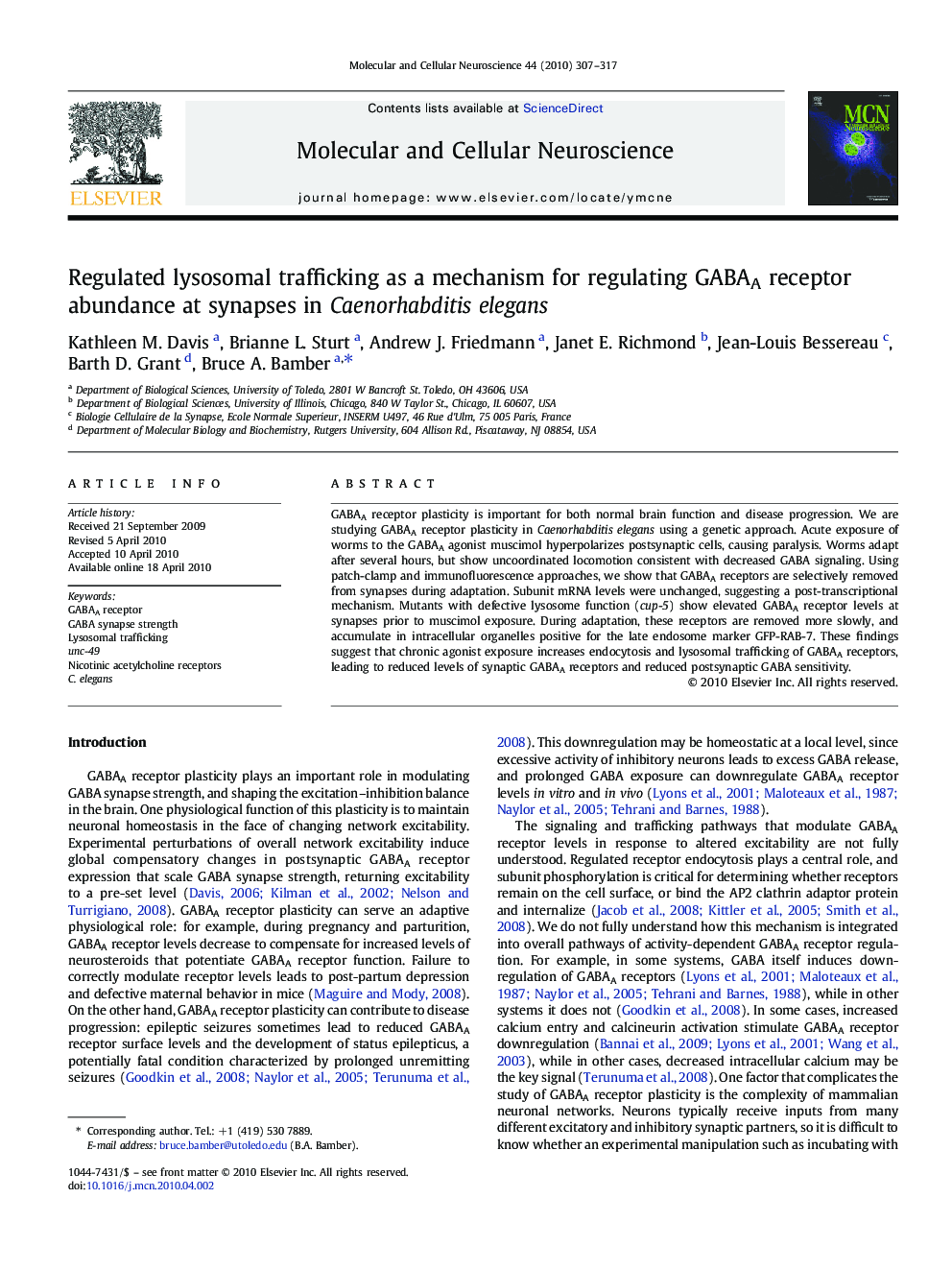| Article ID | Journal | Published Year | Pages | File Type |
|---|---|---|---|---|
| 2198771 | Molecular and Cellular Neuroscience | 2010 | 11 Pages |
GABAA receptor plasticity is important for both normal brain function and disease progression. We are studying GABAA receptor plasticity in Caenorhabditis elegans using a genetic approach. Acute exposure of worms to the GABAA agonist muscimol hyperpolarizes postsynaptic cells, causing paralysis. Worms adapt after several hours, but show uncoordinated locomotion consistent with decreased GABA signaling. Using patch-clamp and immunofluorescence approaches, we show that GABAA receptors are selectively removed from synapses during adaptation. Subunit mRNA levels were unchanged, suggesting a post-transcriptional mechanism. Mutants with defective lysosome function (cup-5) show elevated GABAA receptor levels at synapses prior to muscimol exposure. During adaptation, these receptors are removed more slowly, and accumulate in intracellular organelles positive for the late endosome marker GFP-RAB-7. These findings suggest that chronic agonist exposure increases endocytosis and lysosomal trafficking of GABAA receptors, leading to reduced levels of synaptic GABAA receptors and reduced postsynaptic GABA sensitivity.
